A Complete Guide to Cave Diving From Scuba Dive Experts
If you like to escape from the crowds and explore places not many people have ever seen, cave diving trips may be the perfect adventure for you. But what is cave diving exactly? Well, the broad definition of underwater cave diving is scuba diving with an overhead environment – and no direct vertical access to the surface, open air, or natural light. It is for experienced divers only!
Caving, diving and exploring underwater caverns is an exhilarating experience and offers a number of advantages for divers:
- The chance to explore ancient geologic formations, completely inaccessible by any other means
- The ability to swim with marine life in unique, isolated ecosystems that you would never see near the shore
- An opportunity to put advanced diving skills into practice, to build experience, boost confidence and get as close as possible to the capabilities of professional divers
Cave or cavern diving holidays can be daunting for some people, but for the thrill-seekers, cave diving is a unique and beautiful experience. We have many cave diving holidays that offer great value for money, with destinations for cave diving in the UK, Mexico, Thailand, Malta, and several other incredible countries across the globe. We handpick all dive sites for peak experiences.
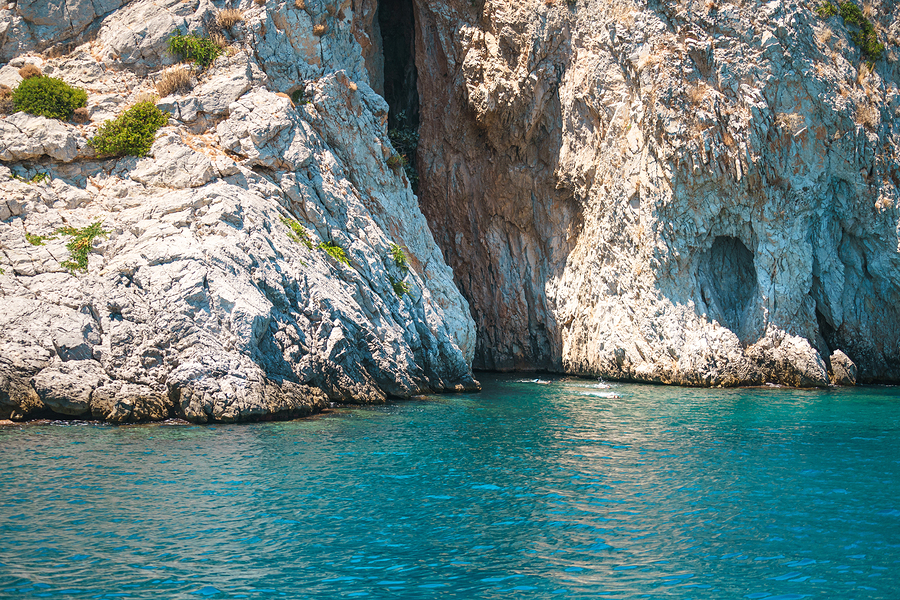
Discover our top cave diving holiday destinations and feel free to get in touch with us if you have any questions and to reserve a spot on your life-changing trip today.
Types of Underwater Cave Diving Experiences
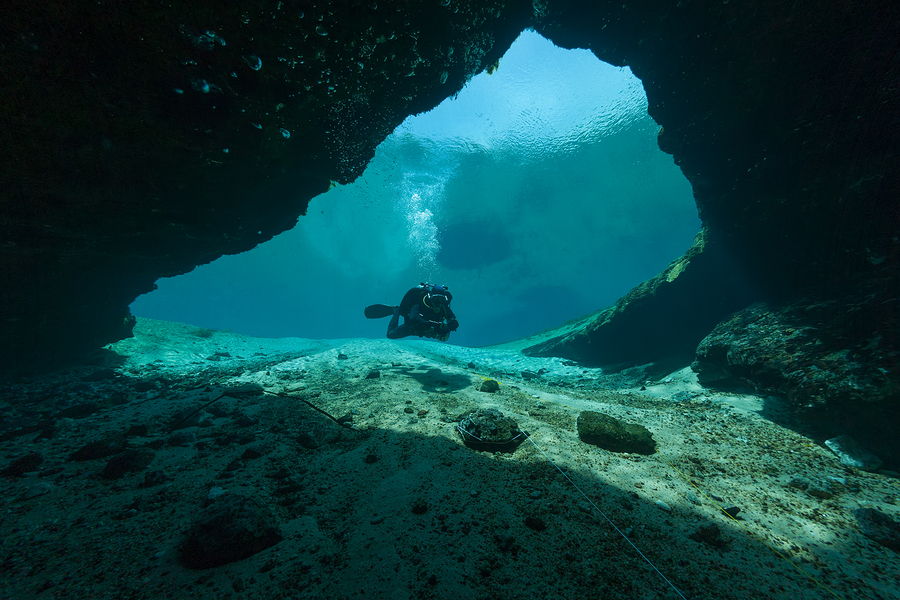
Some experts estimate that there are as few as 75 people in the world who can call themselves professional cave divers. This is a specialist hobby and requires an expert diving qualification that was born from the needs of divers who want to go further than others, either for scientific research, rescue operations, or simply for a unique underwater adventure.
- Cave Diving with a Group
When divers take the plunge and choose to explore some of the world’s most amazing cave systems, they always dive with a group. There are simply too many hazards for it to be done on your own, or even with the support of a single diving partner, so group trips are essential.
Cave diving can be dangerous in a lot of ways. It is easy to drift off-course or to get lost in a series of underwater caverns and tunnels. The best and only solution is to dive with a cave diving group. This way, you will always have other people there to support you or to offer help and assistance if you need it.
- Extreme Cave Diving
Deep sea cave diving is an extreme sport and is a way for divers to explore flooded caves for scientific investigation, research purposes, search and recovery, or for just a technical diving challenge. However, extreme cave diving also comes with several risks. For instance, in scuba and open water diving, you know which way is up and that by swimming up you will eventually reach the surface.
Cave diving is different. In cave diving, you can easily become disorientated, experience buoyancy issues or even panic and use your air supply too quickly. Even if you are certain which way is up the path to safety could be in any direction, so you need a lot of training and an ability to handle your nerves.
What Are the Scariest Underwater Caves?
If you are scared at the thought of cave diving, this extreme sport is not for you. However, if you relish the thought of a technical challenge and feel excited at the chance to explore where others have not been, cave diving could be perfect for scratching that adventurous itch.
There are many beautiful and serene cave diving locations you could visit, and then there are those that present divers with an added element of danger and intensity. Below, we have provided a list of the world’s scariest underwater cave systems:
- Jacob’s Well in Texas, which plunges to a depth of 42 metres (m)
- Samaesan Hole, which is one of the scariest and most dangerous cave dives in Thailand
- Devil’s Cave System at Ginnie Springs in Florida, which includes an underground river
- The Shaft Sinkhole in Australia, which is a very dark cave dive reaching 120 m deep
- Eagle’s Nest Sinkhole in Florida, which has claimed the lives of several divers when they have gone too deep into the sink-shaped cavern
Of course, many caves are quite scary. You will hear tales of people with many dives completed losing their bearings and requiring emergency rescue or, unfortunately, drowning in a lot of caves. However, many cave systems are less cavernous, closer to the surface, and much safer.
- Freshwater Cave Diving
There is nothing that attracts photographers to diving more than capturing some stunning underwater images of interesting and exotic marine life. Freshwater cave diving lets you take pictures that are as crisp and clear as if they were taken above the surface.
Freshwater caves offer crystal clear visibility and are popular with cave divers wanting to take stunning photographs. Read on to discover our list of the world’s best cave diving sites – we have some incredible freshwater cave diving locations to recommend!
Diving Courses & Certifications to Learn to Cave Dive
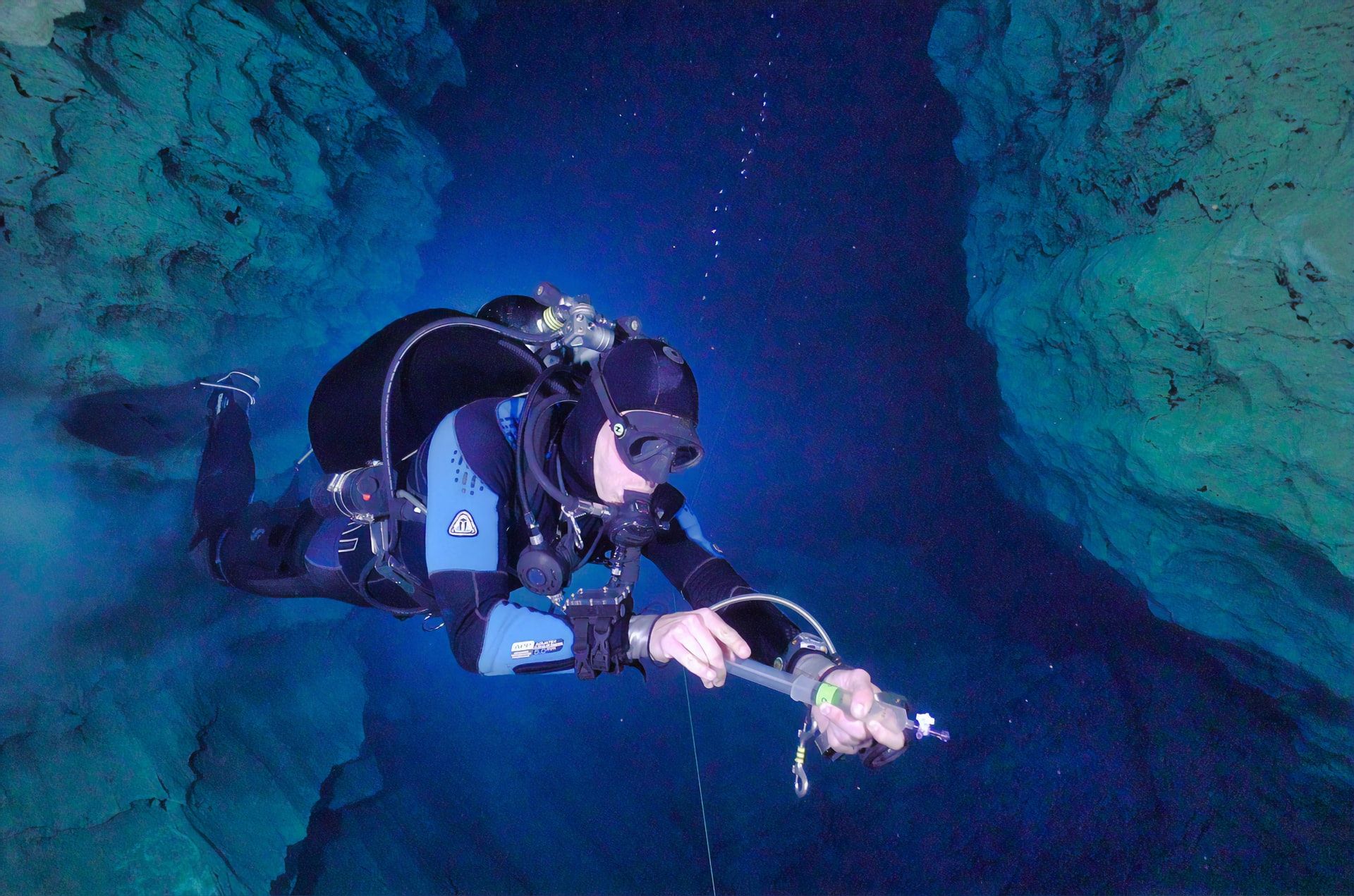
Before you set off on your cave diving adventure, you will need to learn how to cave dive safely. So, it is important to ensure you get properly trained and fully qualified in the following areas:
- Firstly, you will be required to complete an Advanced Open Water course, which allows you to dive up to 40 m or 130 feet.
- You then need to take a specialist cavern diving course, which allows you to gain experience in diving in overhead environments and in low-light conditions.
- Finally, you must complete a night diving course, which will let you gain experience in diving in low-light conditions and where your visibility is significantly reduced.
Take a look at our selection of PADI Dive Courses, which are available with superb-value cave certification packages and can be completed at many convenient locations in the UK.
What is the Difference Between a Cavern Diver and a Cave Diver?
There are multiple differences between cavern and cave diving that are important to note. Cavern diving usually occurs in the mouth of a cave where the environment is lit up from daylight streaming through the water. This can be a good first step towards cave diving for real.
In contrast, cave divers can dive for miles under the water without any natural light and with very limited water visibility. Full cave diving is a specialist qualification that is only attained by the very best divers in the world.
Cave diving is a dangerous and challenging adventure that requires significant and life-saving training. If you want to partake in cave diving, you need the experience, mentality, and skills to safely navigate the most dangerous underwater situations.
With the proper training and plenty of diving experience, you can learn how to safely navigate some of the most beautiful caves in the world.
How to Prepare for Cave Diving
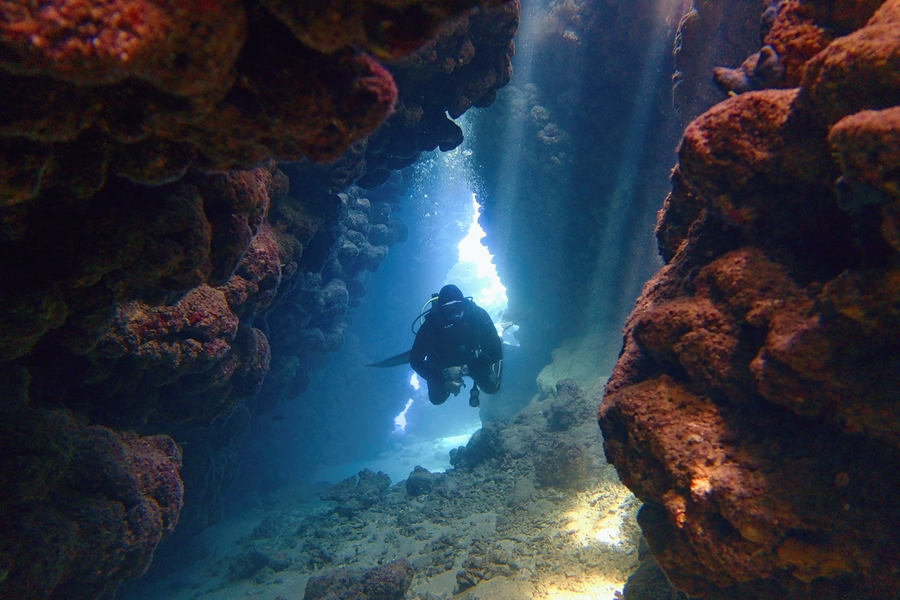
Cave divers need comfort and familiarity with buoyancy control and awareness of rescue operation procedures, among other essential skills. To prepare for cave diving, a lot of different types of training are involved and you have to master several drills, such as:
- Calmly addressing an underwater equipment failure
- How to deal with situations where your tank runs out of air
- What to do if you lose your dive buddy in the cave
- What to do if you lose the line that connects you to the exit of the cave
- What to do if your dive buddy becomes tangled in the line.
You could be faced with some extreme circumstances while cave diving, so you need to have no fear and keep calm. If you want to become a great cave diver, we recommend putting in many open water hours so that you are prepared and confident, even in challenging situations.
What Types of Underwater Caves Can You Explore?
There are four main types of caves that you can dive in:
- Sea Caves: These caves are naturally created by waves and are not usually very deep or especially long. They are most commonly found in coastal regions and are a great place to begin your cave diving adventure or to build experience.
- Coral Caves: These caves are carpeted in large formations of colourful coral. When diving in coral, you will see many coral reefs growing together to form closed-off caves. Coral caves are often shaped like tunnels and are home to a lot of marine life.
- Lava Tubes: A lava tube is formed by volcanic activity when a volcano erupts and hits the sea. When the lava hits the ocean, the surface cools and hardens, while inside the lava still moves, creating a tube. Some of the world’s best lava tubes are in Hawaii.
- Solution Caves: A solution cave is formed over hundreds of years. Water containing carbonic acid slowly seeps into the limestone and dissolves the rock at lower levels, which is what creates the cave structure. There are beautiful solution caves in Florida.
Cave Diving Equipment
The most crucial piece of cave diving equipment is the diver’s reel. This safety line is unwound as the diver explores the cave network. A diver’s reel acts as a lifeline, as it is how they will find their way back to the surface safely when the cave may have some very narrow and winding passages.
The most important thing about all cave diving equipment is that it is firmly strapped down, which cannot be emphasised enough. Loose equipment or flapping fin straps are a big risk to cave divers as they can cause entanglement. All gauges, hoses, and regulators need to be tightly fitted to the diver’s suit and properly strapped down.
The World’s Best Cave Dive Sites & Holidays
We have some amazing handpicked cave diving holidays in the locations we have listed below. Click on your dream destination to learn more about the dive itineraries and to book your place:
- Cave Diving in the Red Sea, Egypt
- Cave Diving in Malta, which also includes weekend trips during the winter
- Cave Diving in Thailand
- Cave Diving in Belize, which includes trips to Hamanasi Adventure and Dive Resort
- Cave Diving in Mexico, which includes trips to both Cancun and Melia Cozumel
If you are going to take the plunge and experience the thrills of cave diving, you want to make sure you are signing up for an incredible experience. This is why we have put together a quick list of the world’s best cave diving locations, just for you, below:
1. Cenote Angelita – Tulum, Mexico
Found on the Yucatan Peninsula, the Cenote Angelita is a stunning cave diving experience. For years it has mystified divers with its layers of hydrogen sulphate. This creates a cloudy, almost mythical effect that separates the clear water from the salt water at 30 m (or 100 feet) below.
Required Certification: Advanced Open Water – Book Now
When to Dive: May to September
2. Indian Springs – Florida, USA
The Indian Springs caves are located on private property, just south of Tallahassee, and are widely regarded the best dive experience in North America. There are several points of interest in this cave, including the Wakulla Room, the Power Room, and the Bone Narcosis Room.
The main passage of the Indian Springs is 180 m (or 600 feet) before divers reach a T-junction and can turn left to go downstream or right to go upstream. The Indian Springs offer the enjoyment of a cave dive combined with the challenges of a technical dive.
Required Certification: Full cave diver, Trimix, and proof of 100 cave dives.
When to Dive: late April to October.
3. Ben’s Cave – Lucayan National Park, Grand Bahama
The Grand Bahama is home to the longest freshwater cave system in the world and is a must for adventurous cave divers. With plenty of marine life, there is a lot to see, with the cave home to freshwater eels, shrimp, and mosquito fish.
Required Certification: Open Water – Book Now
When to Dive: October to June
4. Nereo Cave – Alghero, Sardinia
The Nereo Cave is the largest underwater cave in the Mediterranean Sea. Both the sheer size of this cave and its many arches and tunnels attract cave divers from all over the world each year. If you are new to cave diving, then the Nereo Cave is the perfect location because it is easy to navigate and experience within recreational diving limits.
Required Certification: Advanced Open Water – Book Now
When to Dive: April to October
5. Kilsby’s Sinkhole, Mt. Gambier, South Australia
Kilsby’s Sinkhole was one of the first sinkholes ever discovered in Mt. Gambier and divers have been flocking to the area since the 1950s. The sinkhole itself is 65 m deep and the limestone cavity is filled with crystal-clear freshwater, which means the visibility is beautiful.
Kilsby’s Sinkhole is the perfect cave diving experience for many divers because it boasts both overhead and non-overhead environments, which is much safer and provides greater peace of mind.
Required Certification: Open Water – Book Now (for non-overhead areas) or cave diver (for overhead areas).
When to Dive: All year round
Cave Diving Certifications for Beginners
Do you want to explore some of the world’s most challenging cave dives but are unsure where to start? Our excellent value-for-money PADI Open Water Diver course is the world’s most popular and widely recognised cave scuba diving certification.
As the best place to start for anyone new to diving, the open water certification is a fantastic introduction to diving that qualifies you to dive around the world to a maximum depth of 18 m. As a result, you can start exploring shallow sea caverns and caves.
Cave Diving Qualifications for Advanced Divers
If you are a more advanced diver and are keen to take on a technical challenge, our PADI Advanced Open Water course is ideal. Once you have completed this course, you will be a qualified PADI advanced open water diver. This means you will be certified to dive around the world to 30 m, opening up a whole new world of scuba dive sites and underwater adventures.
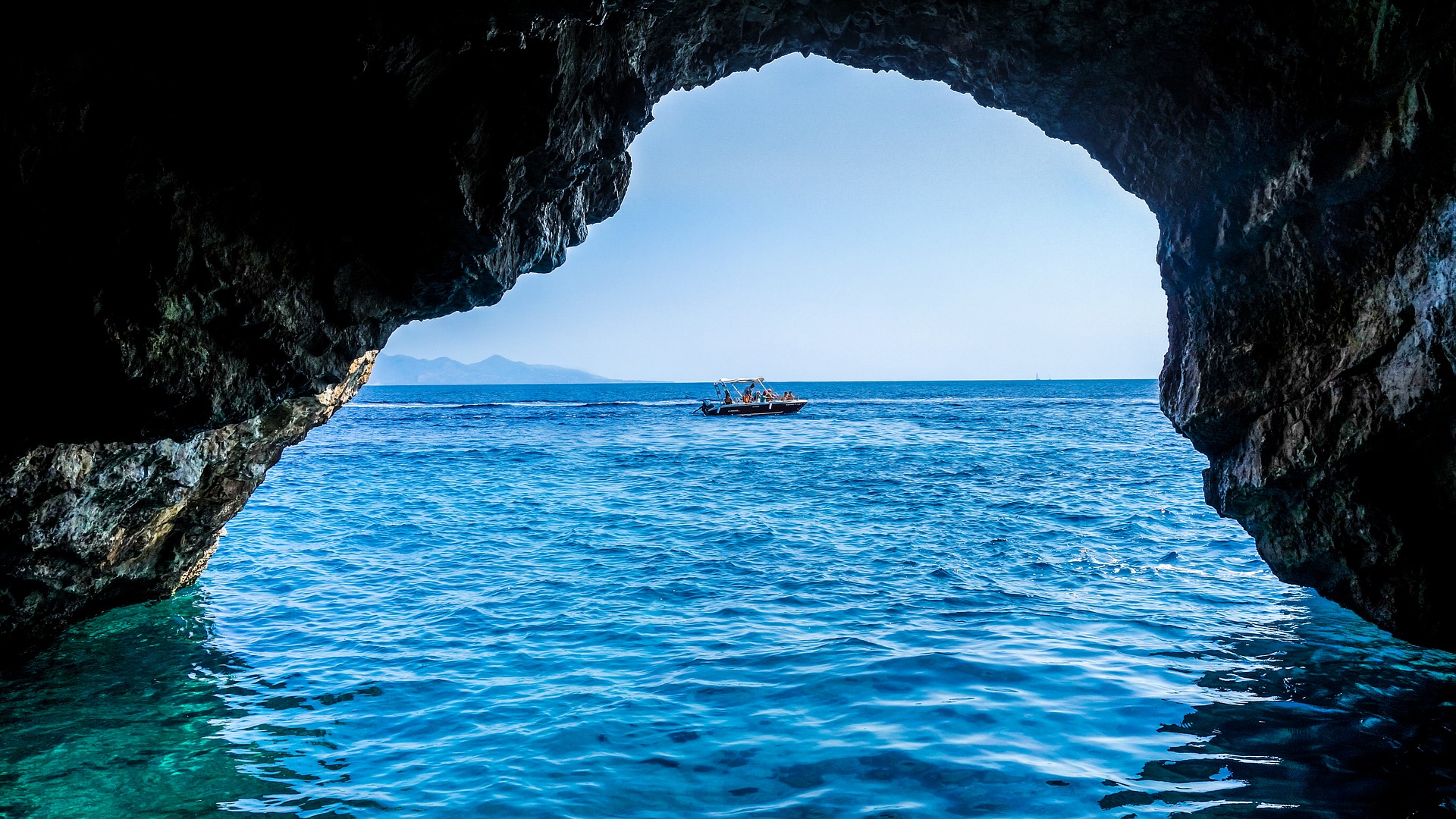
Book Your Course & Learn to Cave Dive
We have a team of experienced PADI diving instructors who are passionate about what they do. Book a spot on any of our courses today and you can learn from some of the best. All of our holidays and cave diving courses are suitable for groups, couples or individuals.
We will help you on your way to becoming a certified cave diver and help you gain all the qualifications you need to dive safely and confidently in some of the world’s most challenging and impressive cave sites. Get in touch with us today to find out more.
